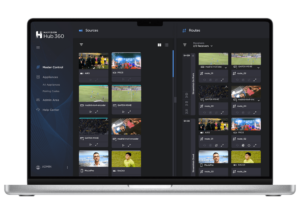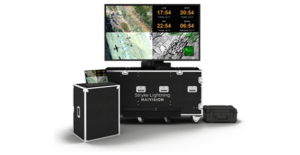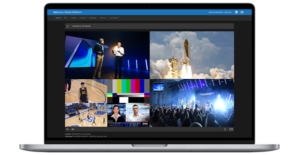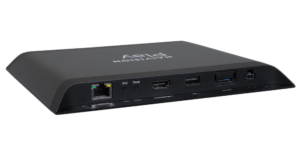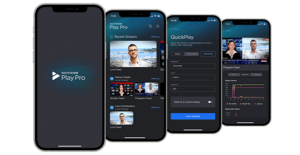5 Things to Consider for Live 4K and HD Production Over the Internet
The findings of a recent broadcast survey confirm that among the top three commercially significant trends in broadcast right now are IP networking, content delivery, and 4K/UHD. It’s no secret that the heat is on for broadcasters everywhere. Not only are the C-Band and other satellite services that they have come to rely upon to bring content to their viewers becoming scarce in the bid to accommodate 5G wireless networks, they’re also faced with an increasing demand for live, 4K UHD content. The alternatives to C-Band such as setting up a private network or relying on dedicated fiber can be costly and cumbersome. Meanwhile, the availability of high-speed internet is nearly ubiquitous. For this reason, broadcast engineers are increasingly turning to the internet for live production of HD and now 4K content.
Under Pressure
The tide is finally turning, and consumers are buying 4K UHD TVs at an accelerating rate. As a result, whether they’ve planned for it or not, broadcast engineers, OB van operators and television producers are faced with an increasing demand for live 4K UHD content. The pressure to differentiate and deliver premium service quality for 4K UHD screens is resulting in a growing concern among broadcast professionals that they will fall short when it comes to delivering 4K content, especially when it comes to live remote productions.
More Pixels, Higher Frame Rates, More Bandwidth
With the successful uptake of 4K UHD TV screens, broadcast engineers are now being asked to widen the gauge of their video contribution over internet workflows to support four times the resolution, twice the frame rate, and 10-bit color spaces. Add all these considerations up and it’s clear that 4K UHD requires significantly more throughput than HD. As HD content co-exists with the increased amount of 4K video, workflows must be able to adapt to different bandwidth requirements.
Here are some key things to consider when establishing a workflow for both HD and 4K video contribution over the Internet:
#1 HEVC/H.265 Video Compression
Advances in video encoding, especially HEVC now make it possible to stream 4K UHD content over a standard internet connection. HEVC can reduce the size of video streams by up to 50% compared to H.264 (also known as AVC). By including HEVC video encoding for remote production workflows, bandwidths can be kept low while maintaining adequate quality levels for live television production, in both HD and 4K.
#2 Low Latency
Latency is the bane of live broadcast production. Too much latency during the first mile of broadcast contribution will result in higher latency further down the workflow. As with HD content, remote production managers and broadcast engineers need to ensure that 4K video encoding latency levels are under half a second or less.
#3 10-bit Color
Although 8-bit color may suffice for HD content, 4K UHD requires 10-bit color to support wider Rec.2020 color spaces and HDR. By including the option of switching between 8 or 10-bit pixel depths, contribution over internet workflows can cater to both HD and 4K.
#4 3G to 12G SDI
3G SDI connectors are great for capturing live HD video from HD cameras, more is needed for 4K. Either four 3G SDI connectors or a 12G SDI input. Since no two 4K sources are the same, ideally a video encoder, such as the Makito X4, will be flexible enough to adapt to both 4K and HD workflows using 3G, 6G, or 12G SDI.
#5 Secure and Reliable Streaming
Delivering 4K content is all about providing a great experience for the viewer. When 4K stream quality is affected by unreliable internet links, then the viewing experience suffers. It’s therefore more important than ever to reliably stream 4K content by using a secure transport protocol such as SRT when streaming over the internet. Using SRT to encrypt video in the AES-128 and 256-bit standard also ensures that valuable content is kept away from prying eyes.
To discover how it’s possible to deliver 4K UHD broadcast content through an infrastructure designed to handle much lower bitrate HD streams, download our whitepaper, The Insider’s Guide to Live 4K Production Over the Internet.






